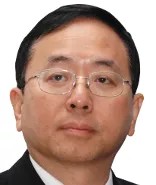Lionel M. Ni earned the B.S. degree in electrical engineering from National Taiwan University in 1973, the M.S. degree in electrical and computer engineering from Wayne State University, Detroit, MI, in 1977, and the Ph.D. degree in electrical and computer engineering from Purdue University, West Lafayette, IN, in 1980. He is Chair Professor in the Computer Science and Engineering Department at HKUST. He served as the Department Head from 2002 to 2008. He also serves as the Special Assistant to the President, Dean of HKUST Fok Ying Tung Graduate School, and Director of HKUST China Ministry of Education/Microsoft Research Asia IT Key Lab. He was the Chief Scientist of the National Basic Research Program of China (973 Program) on Wireless Sensor Networks. Prior to coming to HKUST, Professor Ni was a full Professor in Computer Science and Engineering at Michigan State University where he stayed from 1981 to 2002. He was co-founder and CEO of CC&T Technologies, Inc. (1998-2001). He has directly supervised 42 Ph.D. students and has published over 80 refereed journal articles and over 200 refereed conferences papers in the areas of sensor networks, parallel architectures, distributed processing, high-speed networks, VLSI design automation, operating systems, software tools, fault tolerant computing, parallel compilers, and benchmarking techniques. His research papers have been highly cited for over 15,000 times according to Google Scholar. He is the owner of 7 US/China patents with more than 15 patents pending.
Dr. Ni is serving on the editorial board of Communications of the ACM, ACM Transactions on Sensor Networks, and International Journal of Pervasive Computing and Communications. He is Executive Editor-in-Chief of Frontiers of Computer Science (Springer and Higher Education Press).
He is a visiting chair professor at Shanghai Jiaotong University, a visiting chair professor at Tsing Hua University (Beijing), and an honorary chair professor at National Tsinghua University (Hsinchu). He was the founding director of Institute of Advanced Computing and Digital Engineering, Shenzhen Institutes of Advanced Technology, Chinese Academy of Sciences.

